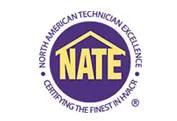The furnace serves as the beating heart of your home’s heating system, keeping your home warm and comfortable during the colder months. However, like any mechanical system, furnaces can occasionally develop issues that may compromise their efficiency and performance. By recognizing the signs that it’s time for furnace repair, you can address potential problems before they escalate into costlier issues and keep your home warm all season long.
Unusual Noises from Your Furnace
One of the most apparent signs that it’s time for furnace repair is strange noises coming from your system. While it’s normal for furnaces to produce some sounds during operation, certain noises may indicate an underlying issue. Potential problems include:
- Rumbling: A rumbling noise might indicate that the furnace’s burners require cleaning. Dirty burners may compromise the unit’s efficiency and pose a safety risk.
- Squealing: A persistent squealing sound may be due to a slip in the blower belt, a damaged blower motor, or a lack of lubrication in the bearings.
- Banging or Popping: This could be a sign of a delayed ignition, where gas builds up in your furnace before igniting, causing an unsettling noise. Alternatively, this may indicate a dirty or clogged filter, resulting in restricted airflow and causing the ducts to pop from the sudden pressure change.
Inadequate Heating or Uneven Temperature Distribution
Another major indicator that you need furnace repair is inadequate heating or uneven temperature distribution in your home. If certain rooms are noticeably colder than others, or your furnace simply isn’t providing enough heat, it might be time for a repair. Common issues include:
- Thermostat problems: A malfunctioning thermostat may lead to uneven temperature distribution or insufficient heating.
- Clogged or dirty filters: Blocked filters can hinder the proper circulation of warm air, resulting in cold spots or inadequate heating.
- Faulty ignition or pilot lights: A failed ignition or pilot light can prevent your furnace from producing heat, leaving your home feeling cold and uncomfortable.
- Damaged ductwork: Leaks or damage in your ductwork may lead to uneven temperature distribution and make it challenging to maintain a consistently warm indoor environment.
Increased Energy Bills
If you notice a sudden spike in your energy bills despite maintaining similar temperature settings and usage patterns, your furnace might be to blame. Higher energy bills may result from:
- Reduced Efficiency: An older or poorly maintained furnace may lose efficiency, causing it to work harder and use more energy to maintain the desired temperature.
- Thermostat Problems: Inaccurate temperature readings from a faulty thermostat could cause your furnace to run unnecessarily, leading to increased energy bills.
- Leaky or Insufficiently Insulated Ducts: Inadequate insulation or holes in your ductwork can allow warm air to escape, forcing your furnace to work harder to compensate for the heat loss.
Frequent Furnace Cycling
Frequent cycling, or your furnace turning on and off frequently, can be a sign that it’s time for repair. This constant switching is not only annoying but can also lead to increased energy consumption and decreased system longevity. Possible causes for frequent cycling include:
- Oversized Furnace: A furnace that is too large for your home may repeatedly reach the desired temperature and shut off, only to restart once the temperature slightly drops.
- Inaccurate Thermostat Readings: If your thermostat is not correctly reading the temperature, it may send false signals to your furnace, causing it to cycle frequently.
- Clogged or Dirty Filters: Blocked filters can restrict airflow, causing your furnace to overheat and shut down in response.
Aging Furnace
The average lifespan of a furnace is around 15 to 20 years, depending on the make, model, and maintenance history. As your furnace ages, it will naturally become less efficient and more prone to breakdowns. If your furnace is approaching or has surpassed its expected lifespan, consider having your unit inspected by a professional to assess its condition and determine if it’s time for repairs or replacement.
Yellow or Flickering Flame
A healthy furnace flame should be blue and relatively steady. If your furnace’s flame is yellow or flickering, it may indicate issues such as:
- Poor combustion: A yellow flame can be a sign of incomplete combustion, potentially leading to the production of dangerous carbon monoxide.
- Ventilation problems: A flickering flame could mean your furnace is not receiving adequate ventilation, causing inefficient combustion and posing a safety risk.
- Blocked or dirty burners: Dirty or obstructed burners can disrupt the proper mixing of gas and air, leading to an unhealthy flame and inefficient combustion.
Stay Warm with Expert Furnace Repairs from Wolcott Services
Keeping an eye out for these common signs that it’s time for furnace repair can help ensure your home remains warm, cozy, and energy-efficient throughout the colder months. Whether you’re experiencing inadequate heat distribution, unusual noises, or increased energy bills, addressing these issues early on can save you from more significant problems and costly repairs down the line.
Count on our expert technicians at Wolcott Services, the leading provider of plumbing, electrical, heating, and cooling services in Portland, OR, to diagnose and tackle any furnace issues. Our team offers professional furnace repair and maintenance services, adhering to industry best practices and ensuring that your heating system runs efficiently, safely, and smoothly. Contact us today to schedule an appointment and keep your home warm all winter long!



